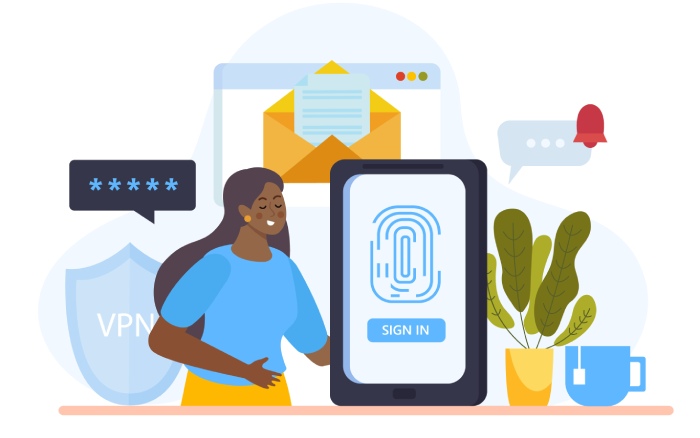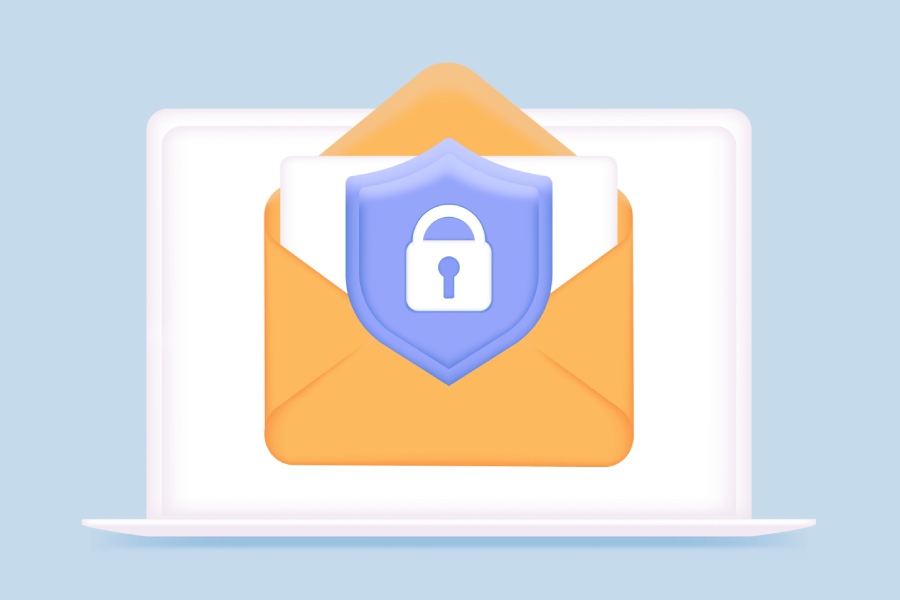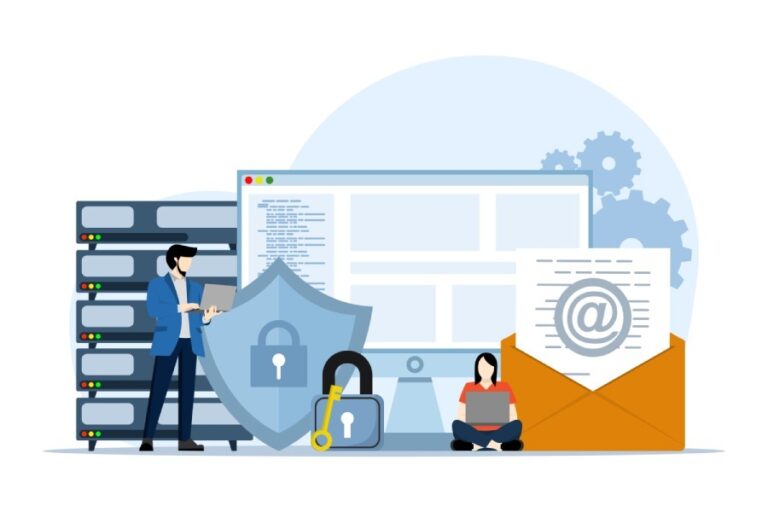No DMARC Record Found: How to Fix Your Email Security Issues
In the digital age, email has become a lifeline for businesses, connecting us with clients and partners instantly. Yet, as convenient as it is, the risk of falling prey to email spoofing remains very real. You might feel secure sending those important messages, but have you ever wondered if your domain could be misused by someone pretending to be you? That’s where DMARC comes into play.
It’s not just about sending and receiving emails; it’s about protecting your identity online and keeping your communications safe from unwanted intrusions. Understanding how to implement DMARC correctly can be a game changer for maintaining trust in your email correspondence. So let’s dive into what happens when you notice that dreaded “No DMARC Record Found” message and how to resolve it effectively!
The “No DMARC Record Found” message indicates that there is no DMARC record configured for your domain in the DNS settings, which can leave your domain vulnerable to email spoofing. To fix this, ensure that you create a properly formatted DMARC record (beginning with ‘v=DMARC1’) under the appropriate subdomain ‘_dmarc’ and check that it has been published correctly by verifying with your DNS provider.
Why “No DMARC Record Found” Error Occurs
One of the primary reasons for facing a “No DMARC Record Found” message is the lack of a properly configured DMARC record in the Domain Name System (DNS) settings. This means that, while you might think you have taken all necessary steps for email security, the actual record may either be missing entirely or not set up correctly.
It’s crucial to understand that for a DMARC record to function effectively, it must adhere to specific formatting and syntax requirements. Think of it like a code that tells mail servers how to handle emails coming from your domain. Key parameters include ‘v=DMARC1’ which establishes the version being used, along with policies such as ‘p=’, specifying how strict you want your policy regarding unauthorized messages. Additionally, reporting addresses need to be included using ‘rua=’ and ‘ruf=’; otherwise, you won’t receive feedback on authentication issues.
According to data from 2023 highlighted by the Anti-Phishing Working Group, about 75% of domains do not have a DMARC record set up, leaving them vulnerable. That’s a staggering number! Many domain owners who encounter this error may find that they simply didn’t configure their settings at all. It’s essential not just to know about DMARC but also to act on it.
So, what might this look like in practice? Imagine you’ve set up an email system, excitedly crafting promotional messages only to find out that they end up in spam folders. This situation often stems from an improperly formatted record or even an unintentional omission of vital tags. For instance, forgetting the ‘v=DMARC1’ tag acts like misplacing your house key; without it, access becomes impossible.
Another frequent issue around this error arises during DNS propagation, where changes made can sometimes take time to appear across different servers—an often overlooked yet critical aspect of maintaining email authenticity. As we consider these challenges further, let’s explore more about authentication mechanisms and their importance in securing your emails.
DMARC and Email Authentication
DMARC, or Domain-based Message Authentication, Reporting & Conformance, is an essential tool that aids domain owners in managing how their emails are authenticated. At its core, DMARC enhances the security framework alongside SPF (Sender Policy Framework) and DKIM (DomainKeys Identified Mail). By clearly defining policies for handling emails that don’t align with the established standards, DMARC acts like a gatekeeper for your digital correspondence.
To understand why this is necessary, we must first consider the individual roles of SPF and DKIM. SPF establishes a list of authorized mail servers permitted to send emails on behalf of your domain. This means that any sender not included on that list is blocked from impersonating you. In contrast, DKIM enhances security by applying cryptographic signatures to emails, verifying that the content hasn’t been altered during transit. Imagine having a securely sealed envelope; that’s what DKIM does for email — it ensures no one can tamper with your message unnoticed.
Together, these two frameworks create a stronger defense against email fraud. Yet without DMARC, even these powerful tools can fall short.
Picture this: you’ve configured both SPF and DKIM correctly. The receiving server checks these records diligently but has no specific guidance on how to handle messages that fail these checks—alerts go unheeded, and harmful emails may still slip through the cracks. Enter DMARC. With this protocol in place, domain owners can instruct mail servers to reject or quarantine suspicious emails. This significantly reduces the risk of phishing attacks and shields your domain’s reputation.
For instance, let’s say a spammer sends an email pretending to be you. Without DMARC, the receiving server might mistakenly accept it as legitimate due to having valid SPF or DKIM records alone. However, with DMARC implemented, you equip the receiving server with directives such as “if this email fails checks, do not let it reach the recipient.” In doing so, you enhance user trust and bolster your brand integrity.
Understanding DMARC’s vital role adds another layer of protection for your communications and underscores why configuring it properly is crucial for safeguarding your reputation online.
As cyber threats continue to evolve and proliferate, integrating DMARC with SPF and DKIM becomes more pivotal than ever. When combined effectively, they form a robust shield against illicit activities while fostering a trustworthy communication environment.
With this foundational knowledge in place regarding the importance of email authentication protocols, we can now turn our attention to practical steps for resolving issues related to missing DMARC records.

Steps to Fix the “No DMARC Record Found” Error
The journey to remedy this issue begins with verifying DNS access. To do this, log in to your domain’s DNS management console through your DNS provider. This vital step is your gateway; without access, you cannot make the necessary changes. Once you’re in, navigate through your DNS settings wisely.
Step-by-Step Guide
Step I – Verify DNS Access
Think of accessing your DNS settings as unlocking a toolbox filled with essential resources for maintaining your email security. After logging into the management console, ensure you can view and edit DNS records.
If you’re unsure where to find it, exploration will go a long way—look for sections like “DNS Management” or “Zone File Settings.”
Remember, if you don’t have access to DNS records, reach out to whoever manages your domain—it could be a hosting provider or a colleague in IT.
Step II – Check for Existing Record
With access secured, the next move is to check whether there’s already a DMARC record or if it’s misconfigured. Tools like MX Toolbox or dmarcian are fantastic companions on this leg of your journey. Entering your domain into these tools will clarify whether a DMARC record exists.
If results reveal no DMARC record published, it’s time to roll up those sleeves for some proactive work. A well-set DMARC record is like a safety net; it catches potential fraudulent activity aimed at your domain before it can cause harm.
Step III – Create a DMARC Record
Assuming no prior record exists, you’re ready to create one from scratch! Within your DNS settings, add a new TXT record. Here’s where things get specific: name it ‘_dmarc’ and input key parameters like:
v=DMARC1; p=none; rua=mailto:reports@example.com; ruf=mailto:forensic@example.comEach segment of this string holds significance:
- v=DMARC1 identifies the version.
- p=none indicates the policy—it’s crucial not to set this too aggressively initially.
- The rua and ruf fields specify where to send reports; ensure these email addresses are monitored so that insightful feedback reaches you.
Step IV – Validate and Monitor
Now that you’ve published the new DMARC record, validate it. Revisit those helpful tools—be sure they’re still in your toolkit—and run another check on your domain. You want to confirm that everything is configured correctly and that there are no lingering issues.
But our task doesn’t end here! Monitoring the reports sent to those ‘rua’ and ‘ruf’ emails offers ongoing insights into how well your policies are working. These reports highlight alignment checks against your domain, which is instrumental in tightening up security further.
Following these steps diligently will not only eliminate the “No DMARC Record Found” error but also set the stage for more advanced configurations that enhance email security protocols effectively.
Setting Up a DMARC Record
Setting up a DMARC record might seem daunting, but it’s quite straightforward when you understand the basic components involved. To start, DNS management is your first destination. This is where you’ll ensure that your domain has the proper settings in place to support DMARC.
Simplified Steps to Setting Up DMARC
Imagine you’re about to add a new layer of security to your email, like installing a deadbolt on your front door. Begin by heading over to your DNS management panel provided by your hosting service or DNS provider. This interface serves as your control center for adjusting various records needed for authenticating emails coming from your domain.
Now that you’re in the right place, the next step involves creating the necessary TXT record.
You’ll want to add a new TXT record with the name _dmarc. This is essential because it tells email providers where to find your DMARC information. Make sure you enter this precisely—no extraneous domain suffixes; otherwise, you may encounter errors that can set back your progress significantly. Think of it as ensuring you have the right address for a delivery; even one wrong digit can cause complications.
Once you’ve established the foundation with your TXT record name, it’s time to construct your DMARC string.
The string itself is essentially a line of code communicating how you want your email domain to behave with respect to authentication. Start simple: include v=DMARC1, which identifies the version of DMARC being used, and p=none, a policy indicating that you want to monitor but not take action against any potential spoofed emails just yet.
An example record might look like this:
v=DMARC1; p=none; rua=mailto:reports@yourdomain.com; ruf=mailto:forensics@yourdomain.com. In this string:
- rua stands for “Reporting URI for Aggregate reports,” which informs where you would like to receive aggregate feedback.
- ruf means “Reporting URI for Forensic reports,” providing a deeper dive into any issues detected.
By incorporating additional attributes like fo, pct, and sp, you gain more granular control over how strictly you’d like DMARC policies enforced based on what you’re aiming to achieve.
Completing these steps equips you with vital security measures for your email communication. Expanding on these foundational practices can reveal even more advantages that enhance the integrity and reliability of your email systems.

Benefits of Implementing DMARC
One of the most significant benefits of implementing DMARC is the enhancement of your domain’s security. By establishing policies that dictate how to handle emails that fail authentication checks, organizations can drastically reduce the chances of falling victim to phishing and spoofing attacks. This series of protections helps maintain your reputation while ensuring that your emails reach their intended recipients without undue interference from malicious actors.
In fact, businesses have observed a 90% reduction in fraudulent emails after successfully instituting DMARC protocols, as reported in a 2023 study by Valimail. Clearly, this isn’t just about securing email for the sake of it; it’s about fostering trust between you and your clients or audience.
Key Benefits:
Enhanced Security: By preventing unauthorized users from using your domain to send deceitful messages, DMARC acts as a robust line of defense against domain spoofing. Not only does this safeguard your brand’s integrity, but it also builds trust among your customers. Nobody wants to receive an email that looks like it’s coming from their bank only to find out it’s a scam!
Retrospective Insight: Additionally, DMARC provides valuable insights through its reporting features (known as rua and ruf). These reports allow domain owners to monitor email activities closely. Whether you need to check who has been sending emails from your domain or gather data on delivery failures, these insights equip you with the ability to refine and improve your email practices constantly.
Delivery Improvement: Moreover, DMARC increases deliverability rates significantly. When email receivers see that emails from your domain are authenticated and trustworthy, they are far less likely to mark them as spam. This means more successful deliveries directly into inboxes rather than inadvertently ending up in junk folders where crucial client communications could be lost.
While these benefits are compelling, it’s crucial to adhere to best practices during implementation to fully realize these advantages. With attention to detail in configuration and monitoring, organizations can ensure they’re not only protecting their reputation but also enhancing communication efficiency.
Best Practices for DMARC Implementation
Understanding and implementing DMARC can feel overwhelming, but with the right approach, you can demystify the process. By following a series of well-defined steps, you’ll ensure compliance with upcoming regulations while enhancing your email security significantly.
Gradual Policy Enforcement
When beginning your journey with DMARC, it’s wise to start with an initial policy of ‘p=none’. This setting allows you to monitor how your emails flow without disrupting delivery.
Think of it as a safety net: while you gather data, you won’t have to worry about legitimate messages getting blocked. As you gain confidence in your setup and begin to recognize patterns in the reports, slowly transition to a ‘quarantine’ policy. This will isolate suspected fraudulent emails rather than immediately reject them. Finally, when you’re assured about the integrity of your email streams, shift to a ‘reject’ policy, which outright denies unauthenticated emails from reaching recipients’ inboxes. This gradual enforcement mimics a cautious migration process allowing for adjustments along the way.
Regular Monitoring
Once you’ve set up your DMARC policy, regular monitoring becomes crucial. Reviewing DMARC reports—specifically those categorized as rua and ruf—enables you to identify unauthorized use of your domain swiftly.
These reports provide insights into who is sending emails on behalf of your domain and whether those emails pass or fail authentication checks. However, don’t just collect these insights; be prepared to adjust your policies based on what you find in these reports. For instance, if unauthorized emails are consistently flagged but necessary legitimate ones aren’t being affected, it might be time to strengthen your policies further towards that ‘reject’ status.
Consistent Updates
Keeping your DNS records consistently updated is critical to effective DMARC management. Situations arise that demand updates—such as changes in your email sending infrastructure or third-party services utilized for sending emails on your behalf.
If neglected, you risk rendering your efforts ineffective. For example, imagine a domain owner forgetting to update their SPF records after changing email providers; this simple oversight could nullify the benefits of having DMARC in place altogether by allowing spoofers to exploit an outdated setup unhindered.
Consistent monitoring and adjustments ensure the longevity of your email security efforts. As you actively engage with DMARC’s mechanics and remain vigilant about potential vulnerabilities, you’ll fortify defenses against the ever-evolving threat landscape businesses face today.
Embracing these best practices may seem like additional work at first, but they will pave the way for a robust email authentication strategy that protects both your organization and its communication integrity long-term.
In summary, prioritizing DMARC implementation through gradual enforcement, regular monitoring, and consistent updates not only enhances security but also builds trust among your stakeholders.






